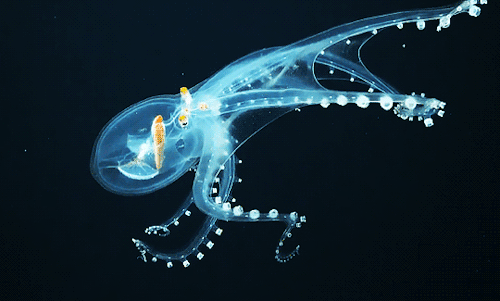Latest Posts by csmsdust - Page 6


In many ways, scientific analyses of consciousness suffer from the same limitations and constraints as cosmological theories: right right at the outset, certain manipulations and observations cannot be carried out.
“The time available for her to submit grants and write papers decreased sharply in the year and a half after she first became a mother. And her lower productivity continued after she had two more sons, but there often wasn’t a way to explain that on her grant applications.”
—
https://www.nature.com/articles/d41586-023-00252-5
I also have a hard time explaining in my grant applications my PhD period. Even though it took 6 years to finish my PhD, I actually was much faster than average. I was on full maternity leaves not working at all for 2 years (!!) and the rest I worked part time. I managed to get my PhD in total of 3 years and 2 months of full time work equivalent.
I am glad people start noticing this and Nature writes about this issue. Let’s not punish researchers for having kids!
(via miss-biophys)
Chaos Game -- from Wolfram MathWorld

Real AI Will Need Biology: Computers Powered by Human Brain Cells - Neuroscience News

Other Minds: The Octopus and the Evolution of Intelligent Life - William Collins

Thinking thoughts



Glass Octopus l Phoenix Islands
Purple Googly-Eyed Squid May Be Math Genius - Seeker


when the effects of media wear off and suddenly you're just a girl in a room all over again
Inside Penrose's universe – Physics World

Gene Mutation Leading to Autism Found to Overstimulate Brain Cells
Scientists looking to understand the fundamental brain mechanisms of autism spectrum disorder have found that a gene mutation known to be associated with the disorder causes an overstimulation of brain cells far greater than that seen in neuronal cells without the mutation.
The Rutgers-led study, spanning seven years, employed some of the most advanced approaches available in the scientific toolbox, including growing human brain cells from stem cells and transplanting them into mouse brains.
The work illustrates the potential of a new approach to studying brain disorders, scientists said.
Describing the study in the journal, Molecular Psychiatry, researchers reported that a mutation – R451C, in the gene Neurologin-3, known to cause autism in humans – was found to provoke a higher level of communication among a network of transplanted human brain cells in mouse brains. This overexcitation, quantified in experiments by the scientists, manifests itself as a burst of electrical activity more than double the level seen in brain cells without the mutation.
“We were surprised to find an enhancement, not a deficit,” said Zhiping Pang, an associate professor in the Department of Neuroscience and Cell Biology in the Child Health Institute of New Jersey at Rutgers Robert Wood Johnson Medical School and the senior author on the study. “This gain-of-function in those specific cells, revealed by our study, causes an imbalance among the brain’s neuronal network, disrupting the normal information flow.”
The interconnected mesh of cells that constitutes the human brain contains specialized “excitatory” cells that stimulate electrical activity, balanced by “inhibitory” brain cells that curtail electrical pulses, Pang said. The scientists found the oversized burst of electrical activity caused by the mutation threw the mouse brains out of kilter.
Autism spectrum disorder is a developmental disability caused by differences in the brain. About 1 in 44 children have been identified with the disorder, according to estimates from the Centers for Disease Control and Prevention.
Studies suggest autism could be a result of disruptions in normal brain growth very early in development, according to the National Institutes of Health’s (NIH) National Institute of Neurological Disorders and Stroke. These disruptions may be the result of mutations in genes that control brain development and regulate how brain cells communicate with each other, according to the NIH.
“So much of the underlying mechanisms in autism are unknown, which hinders the development of effective therapeutics,” Pang said. “Using human neurons generated from human stem cells as a model system, we wanted to understand how and why a specific mutation causes autism in humans.”
Researchers employed CRISPR technology to alter the human stem cells’ genetic material to create a line of cells containing the mutation they wanted to study, and then derived human neuron cells carrying this mutation. CRISPR, an acronym for clustered regularly interspaced short palindromic repeats, is a unique gene-editing technology.
In the study, the human neuron cells that were generated, half with the mutation, half without, were then implanted in the brains of mice. From there, researchers measured and compared the electrical activity of specific neurons employing electrophysiology, a branch of physiology that studies the electrical properties of biological cells. Voltage changes or electrical current can be quantified on a variety of scales, depending on the dimensions of the object of study.
“Our findings suggest that the Neurologin-3 R451C mutation dramatically impacts excitatory synaptic transmission in human neurons, thereby triggering changes in overall network properties that may be related to mental disorders,” Pang said. “We view this as very important information for the field.”
Pang said he expects many of the techniques developed to conduct this experiment to be used in future scientific investigations into the basis of other brain disorders, such as schizophrenia.
“This study highlights the potential of using human neurons as a model system to study mental disorders and develop novel therapeutics,” he said.
We take for granted our special ability to describe abstractions - such as "tomorrow" yet such abstractions are only made possible by language.
-Donald B. Calne , within reason
The limits of my language means the limits of my world.
-Ludwig Wittgenstein
The limits of my language means the limits of my world.
-Ludwig Wittgenstein




No artist tolerates reality
- Nietzsche









nothing is as tender as annotating your favourite books. it’s like leaving a piece of your heart on the pages for somebody else to find.
new booklr accounts :D
I’m looking for some more booklr (bookblr? spelling?) accounts to follow to interact with :D It’s hard to tell how active people are so hopefully some people will want to join in conversation with this!
Your whole room is a better mirror of you than the reflection in the mirror in your room.
Unusual antibiotic killing mechanism we just published in Nature
Our study about the unusual molecular mechanism behind the antibiotic activity of teixobactin can be read open access here:
https://www.nature.com/articles/s41586-022-05019-y

Figure: The target of teixobactin are bacteria-specific molecules (e.g. they do not exist in human cells) in outer membranes of bacteria. Teixobactin sits on the membrane and aggregates into fibrils, damaging the bacterial membrane and hindering its functions. We got these images by atomic force microscopy that has nanometer resolution. We can see individual teixobactin molecules coming to the bacterial membrane and forming the aggregate.
This is the first star from my research on antibiotics that I started at my postdoc in the Netherlands. More are coming out soon! The very first star was published in Nature, the most read journal in life sciences. I am in scientific heaven!


Good morning , I can't choose which book to read today

The books I'm reading at the moment.

Meditations by Marcus Aurelius - I love this book. It puts you in the perspective of the time and space you occupy, I found a lot of my own thinking and feelings within the pages of this book. A guy born in AD 121 has very clear view on life that is still relevant today.

Great Adaptations by Kenneth Catania - A professor of biological sciences takes you on a journey with him while he studies various animals adaptive abilities. Star nosed moles, electric eels, tentacled snakes... Very interesting insight in how these creatures evolved and adapted.

What we cannot know by Marcus du Sautoy - Explains concepts from the ground up, I like the illustrations that accompany the text and practical examples. Lays foundations to the known and wonders into the future of research and the possibilities that come with it as well as limitations. Covering themes from quantum physics and cosmology to sensory perception and neuroscience.

Labyrinths of reason by William Poundstone - "Blue sky, sunshine, deja vu glazed with dread." How do you know this isn't all a dream? Is anything certain? Ontology, logic, mathematics, deduction, epistemology, memory formation, paradoxes and puzzles.

A brain for numbers by Andreas Nieder - Humans' understanding of numbers is intuitive. How are infants able to perceive numbers even before they learn the words for them? How do our brains process numbers? Can animals count? He shows how it is an adaptive ability and that plenty of animals have the number sense too. There is a variety of research and supporting evidence mentioned which I really like.

hmmm





Impulse, instinct or intuition, Applied psychology, geometry and astronomy, 1919




Some downloaded files on interesting topics, I keep these in my phone in case I forget my book!






